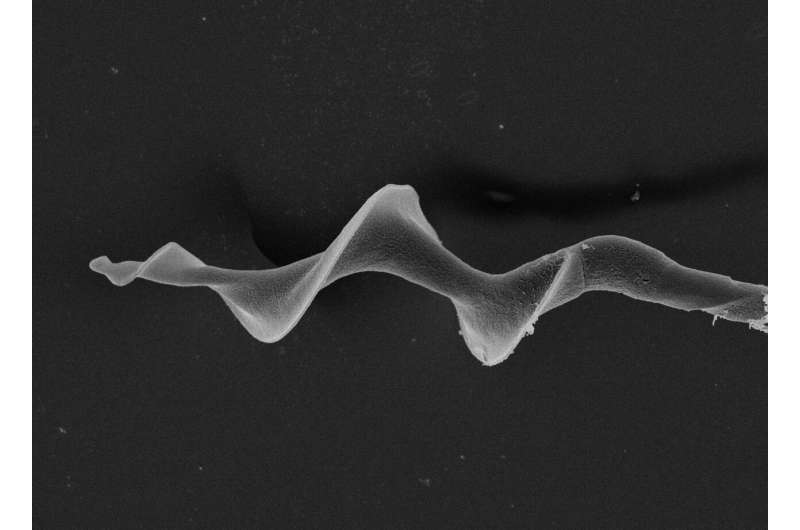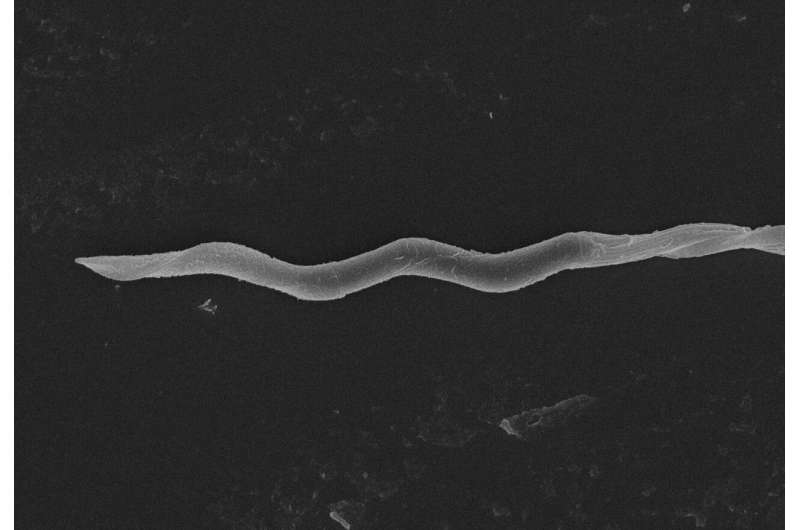Screw-shaped bird sperm swim faster—but it comes at a cost

A study by Ph.D. student Hanna Nyborg Støstad has investigated the peculiar spiral shape of songbird sperm. Støstad compared sperm cells of 36 bird species including house sparrows and tree swallows, and found that species whose sperm had a particularly distinct spiral or corkscrew shape also had sperm with high average swimming speed. However, those species also tended to have high rates of abnormal or damaged sperm.
The second part of the study, identifying the association between sperm shape and sperm damage, was published today in Journal of Evolutionary Biology. The first part, which explains that screw-shaped sperm swim faster, was published in Evolution in July 2018.
Dr. Støstad says, "Our results suggest that there is a trade-off between swimming speed and robustness of the sperm. The more screw-shaped the sperm cell is, the faster it can swim, but the higher the risk of being damaged. This trade-off can help us understand why there are so many strange sperm shapes, not only in songbirds, but throughout the animal kingdom. The different shapes represent different strategies with different pros and cons."
The researchers collaborated with mathematicians to figure out why screw-shaped sperm would swim faster than straighter, sleeker sperm. Taking into account physical factors such as drag, viscosity and size, it appears that screw-shaped sperm cells move forward when they spin, effectively drilling into the female fluid to reach the egg. The more spin, the more forward motion.

"Because sperm are so tiny, they really struggle to move anywhere in the much heavier fluid, so it makes sense for them to 'screw' their way forward," says Dr. Støstad.
Although the thin, spiralling edges of the screw-shaped sperm look fragile, the researchers cannot say for certain exactly what causes the screw-shaped sperm to be more prone to abnormalities and damage. However, they do have some ideas.
"I suspect it is related to oxidative damage," says Dr. Støstad. "Sperm cells are particularly prone to oxidative damage, which can lead to abnormalities such as those we observed. However, very little is known about how cell shape affects the risk of oxidative damage, so we need more research."
Although all sperm cells have the same function—to fertilise the egg—there are thousands of different shapes of sperm. From hook-shaped mouse sperm to snake-shaped cobra sperm, researchers have been investigating this variation for decades, and the corkscrew shape of songbird sperm was first observed in the early 20th century. This new research provides a new framework for understanding this extraordinary diversity in sperm cell shapes.
More information: Hanna N. Støstad et al, Sperm head abnormalities are more frequent in songbirds with more helical sperm: A possible trade‐off in sperm evolution, Journal of Evolutionary Biology (2019). DOI: 10.1111/jeb.13446
Hanna Nyborg Støstad et al. Sperm head morphology is associated with sperm swimming speed: A comparative study of songbirds using electron microscopy, Evolution (2018). DOI: 10.1111/evo.13555
Journal information: Journal of Evolutionary Biology , Evolution
Provided by University of Oslo




















